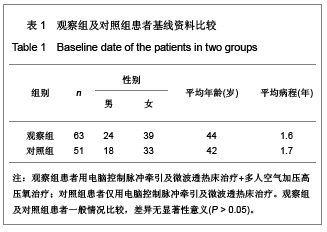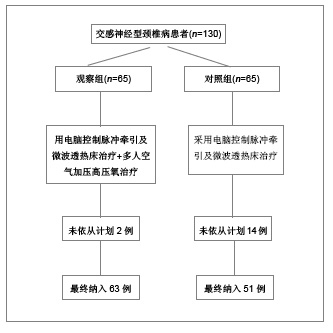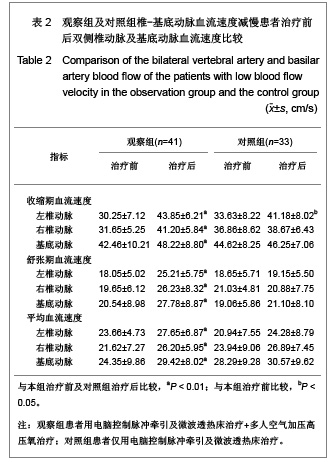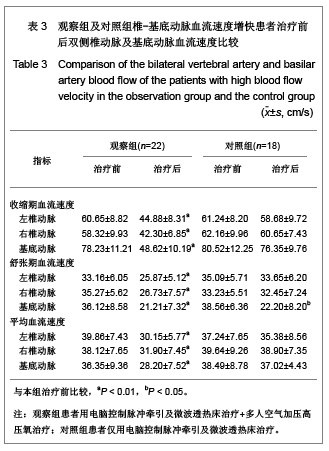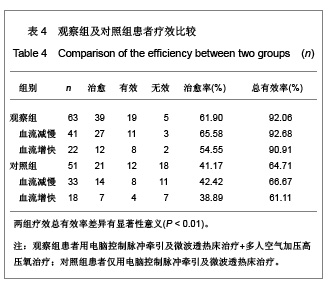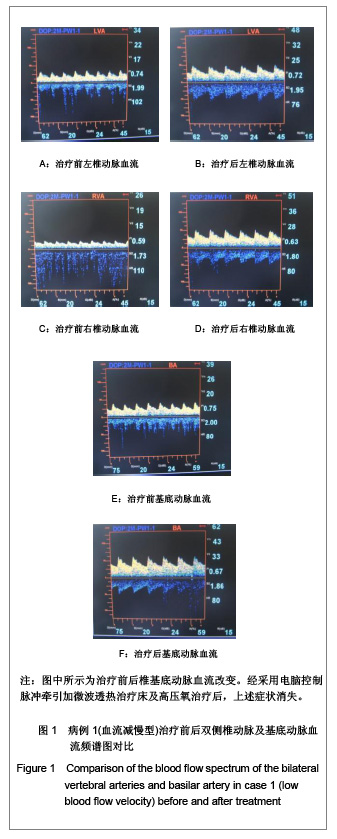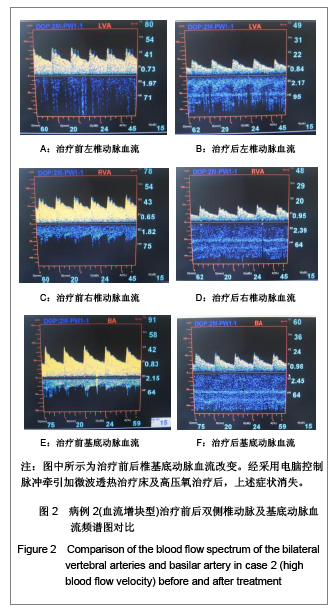| [1] Huang WY. Zhongguo Linchuang Kangfu. 2004;8(8):1551. 黄伟毅.颈椎病的针灸治疗近况[J].中国临床康复,2004,8(8): 1551.[2] Chen XM. Anmo yu Daoyin. 2008; 24(12): 23-24. 陈晓明.综合治疗交感神经型颈椎病60例疗效观察[J].按摩与导引, 2008,24(12):23-24.[3] Ma KY, Sun XX. Zhengzhou: Henan Science & Technology Press. 2005:322-323. 马奎云,孙孝先.颈源性疾病诊断治疗学[M].郑州:河南科学技术出版社, 2005:322-323.[4] Yu D,Wu Z, Zhang C. Zhongyi Zhenggu. 2004;16(8):502. 于栋,武震,张淳.交感型颈椎病发病机制的研究进展[J].中医正骨, 2004,16(8):502.[5] Guo JH, Lin MN, Gao H, et al. Zhongguo Wuzhenxue Zazhi. 2010;10(3):605-606. 郭健红,林木南,高晖,等.以胸闷胸痛等为首诊的交感神经型颈椎病误诊8例分析[J].中国误诊学杂志, 2010,10(3):605-606.[6] Ren LH, Fu GF, Lu WH, et al. Zhongguo Wuzhenxue Zazhi. 2012;12(6):1325. 任立红,付国芬,卢文华,等.交感神经型颈椎病误诊为心律失常1例分析[J].中国误诊学杂志, 2012,12(6):1325.[7] Yan YJ, Wang JR, Jia JW, et al. Zhongguo Chaosheng Yixue Zazhi. 2002;18(9):707-709. 杨玉杰,王金锐,贾建文,等.交感型颈椎病患者头颈部运动后椎动脉血流的观察[J].中国超声医学杂志, 2002, 18(9): 707-709.[8] Yan YJ, Jia JW, Wang JR, et al. Zhongguo Chaosheng Yixue Zazhi. 2004;20(1):45-48. 杨玉杰,贾建文,王金锐,等, 交感型颈椎病伴单侧椎动脉狭窄患者头颈部活动后椎动脉血流的观察[J].中国超声医学杂志, 2004, 20(1):45-48.[9] Zhou SH, Yang J, Zhen RL,et al. Zhongyi Zhenggu. 2008; 20(2): 10-11. 周肆华,杨军,郑瑞莲,等.高压氧及脉冲牵引对椎动脉型颈椎病患者椎动脉血流速度的影响[J].中医正骨, 2008,20(2):10-11.[10] Yan YJ, Li JF Bai ZY, et al. Zhongguo Chaosheng Yixue Zazhi. 2007;23(8):599-601. 杨玉杰,李敬府,白志勇,等.彩色多普勒超声对交感型颈椎病患者保守治疗后椎动脉血流的的观察[J].中国超声医学杂志, 2007, 23(8):599-601[11] Zhang ZH.Chinese Journal of Surgery. 1979;17(6):433. 张之虎.交感型颈椎病外科手术治疗[J].中华外科杂志, 1979, 17(6):433.[12] Yu ZS, Lui ZJ, Dan GD. Peking University. 2002; 34(5):282 284. 于泽生,刘忠军,党耕町.颈椎病外科治疗的回顾[J].北京大学学报: 医学版, 2002, 34(5):282-284[13] Sun Y, Cheng QF, Zhonghua Waike Zazhi. 1993; 31(8): 96-97. 孙宇,陈琪福.第二届颈椎病专题座谈会纪要[J].中华外科杂志, 1993, 31(8): 96-97[14] Cheng YB. Nanjing: University Press. 1994:186. 陈佑邦.中医病症诊断疗效标准[M].南京:南京大学出版社,1994: 186[15] Chen QX, Sun BO, Zhong SZ. Nerves accpmpanying the vertebral artery and their dinical relevance. Spine. 1988;12 1360-1364.[16] Wu HR, Sheng Y, Wu ZY. et al. Zhongguo Jiaoxing Waike Zazhi. 2006;14(1):12-15. 吴华荣,申勇,吴占勇,等.颈椎病发病学中的不稳定因素[J].中国矫形外科杂志,2006,14(1):12-15.[17] Zheng SJ. Beijing: People’s Medical Publishing House. 1990: 334-342. 郑思竞.系统解剖学[M].北京:人民卫生出版社, 1990:334-342.[18] Du JM, Tian XW, Din XF, et al. Jingyaotong Zazhi. 2009; 30(2): 181-182. 杜建明,田小武,丁晓方,等.小针刀结合骶管冲击治疗交感神经型颈椎病的疗效观察[J].颈腰痛杂志, 2009,30(2):181-182.[19] Qian J,Tian Y, Qiu GX, et al. Dynamic rabiographic analysis of sympathetic cervical spondylosis instability. Chin Med Sci J. 2009;24(1):46-49.[20] Gu T, Wan XW, YW, et al. Zhonghua Shiyan Waike Zazhi. 2007; 24(6):665-668. 顾韬,王新伟,袁文,等.颈椎间盘与后纵韧带上交感神经分布的特点及临床意义[J].中华实验外科杂志, 2007,24(6):665-668.[21] Zhang BX, Wan Y. Beijing: People's Military Medical Press. 2004:362. 张伯勋,王岩.现代颈肩腰腿痛诊断与治疗学[M].北京:人民军医出版社, 2004:362.[22] Jia L. Zhongguo Jiaoxing Waike Zazhi. 2009;17(11):843-844. 贾林.交感型颈椎病的治疗进展[J]. 中国矫形外科杂志, 2009, 17(11):843-844.[23] Yang KQ. Beijing: Beijing Publishing House. 1994:513-526. 杨克勤. 脊椎疾患的临床与研究[M].北京:北京出版社, 1994: 513-526[24] Zhou HT, Tan WJ. Zhonghua Wuli Yixue yu Kangfu Yixue Zazhi. 2006;28(7): 484-485. 周宏图, 谭文捷.高压氧及颈椎牵引综合治疗椎动脉型颈椎病的疗效观察[J]. 中华物理医学与康复医学杂志, 2006, 28(7): 484-485.[25] Yan J ,Zhou SH, Wan QY. Anmo yu Kangfu Yixue. 2010;1(9): 15-16. 杨军,周肆华,王秋无.高压氧加牵引治疗交感神经型颈椎病76例疗效观察[J].按摩与康复医学, 2010, 1(9): 15-16.[26] Yi Z, Weng QB, Long Y. Guangzhou: Guangdong Science & Technology Press. 2005. 易治,翁其彪,龙颖.高压氧医学临床指引[M].广州:广东科技出版社, 2005.[27] Li WR, Ni GT. Shanghai: Shanghai Science & Technology Press. 1998: 298-300. 李温仁,倪国坛.高压氧医学[M].上海:上海科学技术出版社,1998: 298-300.[28] Li Y.Zhonghua Wuli Yixue yu Kangfu Zazhi. 2005,27(8):459. 李月.高压氧配合调制中频电治疗椎动脉型颈椎病[J].中华物理医学与康复杂志,2005,27(8):459.[29] He XL. Hubei Zhongyi Zazhi. 2009;31(11):70. 贺旭林.颈椎整复法治疗交感神经型颈椎病187例[J].湖北中医杂志, 2009, 31(11):70.[30] Wan LS, Jiang GQ. Zhongguo Chaosheng Zhenduan Zazhi. 2004;5(6):449-450. 王莉闪,蒋国卿.经颅多谱勒超声对颈椎病患者脑底动脉的评价[J].中国超声诊断杂志,2004,5(6):449-450.[31] Qian WH, Bo Y, Cheng X. Shanghai Zhenjiu Zazhi. 2002; 21(4):22-23. 钱伟华,柏杨,陈新.温针灸颈夹脊穴治疗椎动脉型颈椎病40例[J].上海针灸杂志,2002,21(4):22-23. |
